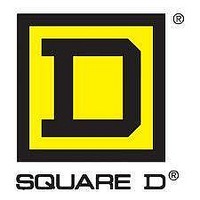990XCP98000 SQUARE D, 990XCP98000 Datasheet - Page 313

990XCP98000
Manufacturer Part Number
990XCP98000
Description
QUANTUM CPU BATTERY FOR S
Manufacturer
SQUARE D
Datasheet
1.990XCP98000.pdf
(463 pages)
Specifications of 990XCP98000
Rohs Compliant
YES
Battery Capacity
1800mAh
Battery Technology
Lithium
Battery Voltage
3V
Battery Terminals
Connector
Weight
0.12lb
- Current page: 313 of 463
- Download datasheet (22Mb)
Software structure
Application browser
Program execution
Program processing
Updating of outputs
Input acquisition
(continued)
Modicon
automation platform
Unity Pro
This task, which can be periodic or cyclic, executes the main program. It is activated
systematically.
Each of its component sections and subroutines can be programmed in Ladder (LD),
Function Block Diagram (FBD), Structured Text (ST) or Instruction List (IL) language.
Several sections of the master task can be programmed in Sequential Function
Chart (SFC) or Grafcet language.
This task has a higher priority than the master task, and is periodic to allow time for
tasks with lower priorities to be executed. It should be used when fast periodic
changes in discrete inputs need to be monitored and acknowledged.
The execution of the master task (lower priority) is suspended while the fast task is
being executed. Processing operations in this task must be as short as possible in to
avoid adversely affecting master task processing operations.
Each of the component sections and subroutines of the fast task can be
programmed in Instruction List, Structured Text, Ladder or Function Block Diagram
language (ST, IL, LD or FBD).
These tasks are available with the Premium
and 140 CPU 651 p0/652 60/671 60 high-end processors, and are intended for
slower processing operations, such as measurement, process control, HMI,
application diagnostics, etc.
Periodic type auxiliary tasks have the lowest level of priority and are executed once
the higher-priority periodic tasks (master and fast) have completed their scan.
Each of the component sections and subroutines of the fast task can be
programmed in Instruction List, Structured Text, Ladder or Function Block Diagram
language (ST, IL, LD or FBD).
Unlike the tasks described above, these tasks are not linked to one period. The
asynchronous execution of these tasks is triggered by:
An event from certain application-specific modules (e.g.: exceeding a counter
threshold, change of state of a “discrete” input).
An event from the event timers.
These tasks are processed before the other tasks and are thus suitable for
processing requiring very short reaction times in comparison to the arrival of
the event.
Modicon M340, Atrium, Premium and Quantum platforms have 3 priority levels
(these are, in descending order, EVT0 module event, EVTi module events and Timeri
timer events).
These tasks, each comprised of a single section, can be programmed in Instruction
List, Structured Text, Ladder or Function Block Diagram language (ST, IL, LD or FBD).
Each of the master, fast or event-triggered tasks reads (at the start of the scan) and
writes (at the end of the scan) the inputs assigned to it.
By default, they are assigned to the master task.
For the Quantum platform, the remote inputs/outputs (RIO) are assigned only to
the master task (these assignments can be made per station or for each of the
component sections of the task); the distributed inputs/outputs (DIO) are all assigned
to the master task (with no assignment to its component task).
For event-triggered tasks, it is possible to assign input/output channels (1) other than
those relating to the event. Exchanges are then performed implicitly at the start of
processing for inputs and at the end of processing for outputs.
(1) These channel assignments are made per I/O module for Quantum and per channel for
Multitask software structure (continued)
Master task
Fast task
Auxiliary tasks
Event-triggered tasks
Assignment of I/O channels to tasks
Atrium/Premium inputs/outputs.
™
software
®
Quantum
™
and Quantum TSX P57 5p4M/6634M
™
7/13
10
10
1
1
2
2
3
3
4
4
5
5
6
6
7
7
8
8
9
9
Related parts for 990XCP98000
Image
Part Number
Description
Manufacturer
Datasheet
Request
R

Part Number:
Description:
Pushbutton, Non-Illum'd Red "STOP", Momentary, 1NO-1NC, Square 30mm, 10A, 600V
Manufacturer:
SQUARE D
Datasheet:

Part Number:
Description:
KITS,TWIDO? PROGRAMMABLE CONTROLLERS,KITS,TWIDOPACK STARTER KIT - ADVANCED LEVEL,PROGRAMMABLE CONTROLLERS,TWIDO? PROGRAMMABLE CONTROLLERS ,SQUARE D
Manufacturer:
SQUARE D

Part Number:
Description:
LAMPS,INDICATOR,STACKABLE,LAMPS, STACKABLE INDICATOR,VISUAL INDICATING SIGNALS,XVB SERIES INDICATING BANKS ,SQUARE D
Manufacturer:
SQUARE D

Part Number:
Description:
LAMPS,INDICATOR,STACKABLE,LAMPS, STACKABLE INDICATOR,VISUAL INDICATING SIGNALS,XVB SERIES INDICATING BANKS ,SQUARE D
Manufacturer:
SQUARE D
Datasheet:

Part Number:
Description:
I/O EXTENDER MODULE 4 D IN & 2 D OUTPUT
Manufacturer:
SQUARE D
Datasheet:

Part Number:
Description:
CB ACCESSORY, UNDERVOLTAGE TRIP 48V DC
Manufacturer:
SQUARE D
Datasheet:











